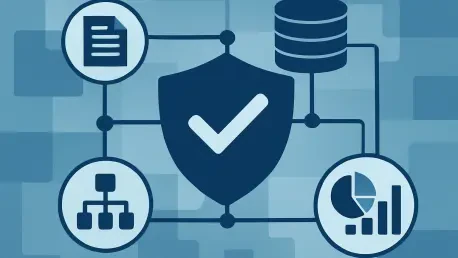I’m thrilled to sit down with Chloe Maraina, a visionary in the realm of Business Intelligence with a deep passion for crafting compelling visual stories through big data analysis. With her expertise in data science and a forward-thinking approach to data management and integration, Chloe has become a guiding light for organizations looking to harness data as a strategic asset. Today, we’ll dive into the critical topic of data governance, exploring its significance, the essential components of a robust framework, and the practical steps to build and adapt one for organizational success.
How would you define data governance, and why is it so crucial for organizations in today’s data-driven landscape?
Data governance, at its core, is the set of policies, processes, and roles that ensure data is managed effectively across its lifecycle. It’s about treating data as a valuable asset, ensuring its quality, security, and compliance with regulations. In today’s world, where organizations are swimming in data, it’s crucial because without proper oversight, you risk fragmentation, inaccuracy, or even legal issues. Good data governance builds trust in data, which is essential for making informed decisions and staying competitive.
What role does data governance play in helping organizations view and manage data as a strategic asset?
Data governance transforms data from a mere byproduct of operations into a strategic tool. It establishes clear ownership and accountability, ensuring that data is accurate, accessible, and aligned with business goals. When you have a governance structure in place, data becomes a reliable foundation for analytics, decision-making, and even innovation. It’s like turning raw material into a refined product—data governance adds the structure needed to unlock its full potential.
Can you share an example of how poor data governance might lead to significant challenges for an organization?
Absolutely. Imagine a company with multiple departments using customer data, but there’s no centralized governance. Sales might have one version of customer records, while marketing has another, leading to inconsistent messaging or missed opportunities. Worse, if data isn’t secured properly due to lax governance, you could face a breach or fail to comply with regulations like GDPR, resulting in hefty fines and reputational damage. I’ve seen cases where poor data quality led to flawed reports, costing companies millions in misguided investments. It’s a domino effect of avoidable errors.
Why do you believe a data governance framework is a necessity for organizations aiming to manage data effectively?
A data governance framework provides the structure and clarity needed to manage data consistently across an organization. It’s like a blueprint—it defines roles, sets rules, and integrates processes with business objectives. Without it, efforts to manage data can become fragmented or reactive. A framework ensures sustainability by embedding governance into daily workflows, making it easier to maintain trust in data, meet compliance needs, and support growth over time.
How does a well-designed data governance framework foster trust in data across different departments?
Trust in data comes from consistency and transparency, which a framework directly supports. By establishing standardized processes for data quality and access, it ensures everyone is working from the same reliable dataset. For instance, when finance and operations both access customer data through a governed system, they know it’s accurate and up-to-date. A framework also clarifies accountability—when people know who’s responsible for data, they feel more confident using it. It breaks down skepticism and builds a shared reliance on data.
In what ways can a data governance framework help reduce data silos and improve consistency across systems?
Data silos often emerge when departments hoard or manage data independently, leading to inconsistency. A governance framework tackles this by setting enterprise-wide standards for how data is created, stored, and shared. It encourages collaboration through shared tools like data catalogs and clear policies on data access. I’ve seen frameworks unify disparate systems by prioritizing master data management, ensuring, for example, that a customer ID means the same thing across platforms. This consistency streamlines operations and reduces redundancy.
What do you consider the most vital components of a strong data governance framework?
I’d highlight a few key pieces. First, a clear vision and strategy that tie data governance to business goals—like improving customer insights or ensuring compliance. Then, guiding principles such as transparency and privacy, which shape behavior and decision-making. Data stewardship is critical, as it assigns responsibility for maintaining quality. Finally, technology infrastructure, like data catalogs or security tools, supports the framework operationally. Together, these elements create a cohesive system for managing data effectively.
How important is the role of vision and strategy when establishing a data governance framework?
Vision and strategy are the foundation. They define the ‘why’ behind data governance—whether it’s about building trust, driving revenue through data monetization, or meeting regulatory demands. Without a clear vision, efforts can lack direction, and stakeholders might not see the value. Strategy connects governance to broader business objectives, ensuring it’s not just an IT project but a company-wide priority. It’s what rallies support and keeps the framework aligned with long-term goals.
Why are guiding principles like transparency and privacy so essential in data governance, and how do they impact organizational behavior?
Guiding principles act as the moral compass for data governance. Transparency ensures people understand how data is handled, fostering trust and accountability. Privacy, on the other hand, protects individuals and keeps the organization compliant with laws. These principles influence behavior by setting expectations—if transparency is a core value, employees are more likely to document processes openly. They resolve conflicts too; when policies clash, principles like privacy can guide decisions, ensuring ethical data use.
Can you elaborate on the significance of data stewardship and its contribution to maintaining data quality?
Data stewardship is about assigning specific individuals or teams to oversee data quality and compliance within their domains. Stewards act as guardians—they monitor data for accuracy, resolve issues, and ensure policies are followed. Their role is vital because data quality isn’t a one-time fix; it’s an ongoing effort. For example, a steward might catch duplicate customer records before they skew analytics. By embedding accountability at this level, stewardship ensures data remains reliable and usable across the organization.
What processes for data quality management would you prioritize, and why do they matter so much?
I’d prioritize validation and cleansing processes. Validation ensures data meets defined standards as it’s entered or integrated, catching errors early. Cleansing, meanwhile, addresses existing issues like duplicates or incomplete records. Both are critical because poor data quality can derail everything from reporting to customer trust. I’ve worked with organizations where regular profiling—another key process—revealed hidden inconsistencies, allowing proactive fixes. These processes build a foundation of reliability that governance depends on.
How do clearly defined roles and responsibilities enhance the effectiveness of data governance?
Clear roles and responsibilities eliminate ambiguity and ensure accountability. When you define who owns a data domain, who stewards it, and who supports it technically, everyone knows their part. For instance, data owners make high-level decisions about their domain, while stewards handle day-to-day quality checks. This structure prevents tasks from falling through the cracks and speeds up issue resolution. It also builds confidence—people know who to turn to, making governance a collaborative, effective effort.
What technology tools do you see as indispensable for supporting a data governance framework?
Technology is a game-changer for governance. Data catalogs are essential for discovering and understanding data assets across the organization. Metadata repositories provide context and lineage, which are key for transparency. Security systems, like access controls, protect sensitive data and ensure compliance. Data quality tools for profiling and cleansing are also critical to maintain standards. These tools automate repetitive tasks and scale governance efforts, freeing up human resources for strategic work while ensuring consistency.
When building a data governance framework, why is assessing the current state of data management such a critical first step?
Assessing the current state gives you a reality check. It helps you understand what data assets you have, their quality, and how they’re being managed—or mismanaged. Without this baseline, you’re building on sand. For example, inventorying critical data domains like customer or financial data reveals gaps or silos. Evaluating existing policies shows what’s working or outdated. This step ensures your framework addresses real issues rather than theoretical ones, making it relevant and impactful from the start.
What advice do you have for our readers who are looking to establish or improve data governance in their organizations?
My biggest piece of advice is to start small and stay focused. Don’t try to govern everything at once—pick a high-impact area like customer data and build from there. Engage stakeholders early to get buy-in and align your efforts with business needs, not just compliance. Customize any framework to fit your culture; a one-size-fits-all approach rarely works. Finally, invest in training and communication—data governance is as much about people as it is about processes. Celebrate small wins to build momentum and keep everyone motivated.









